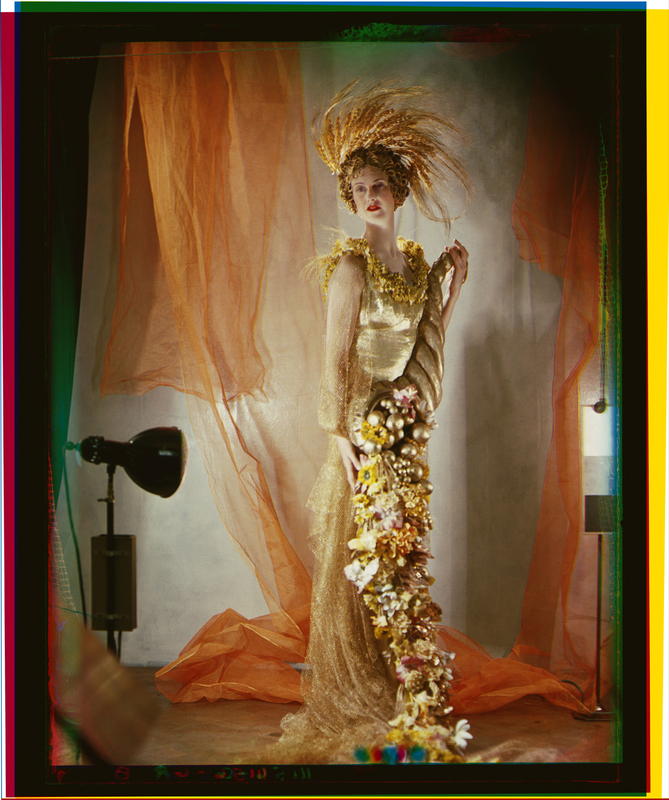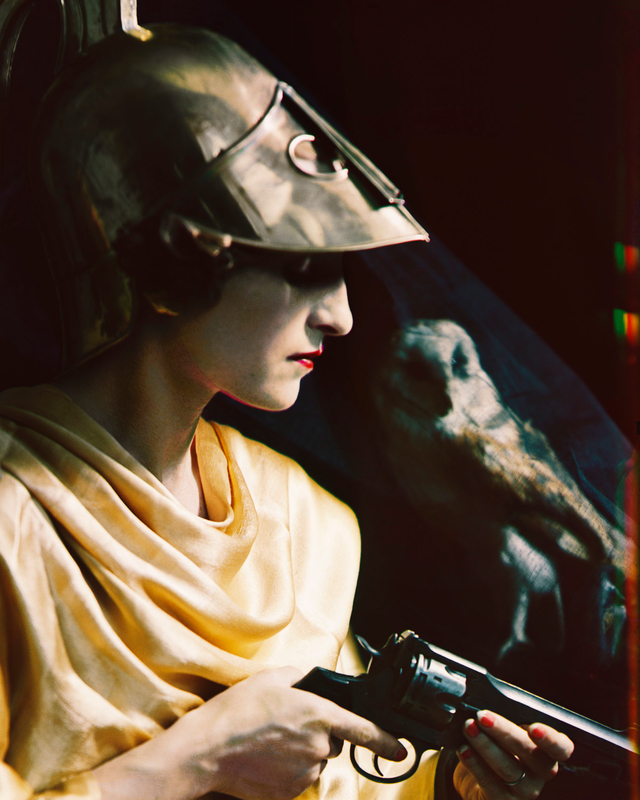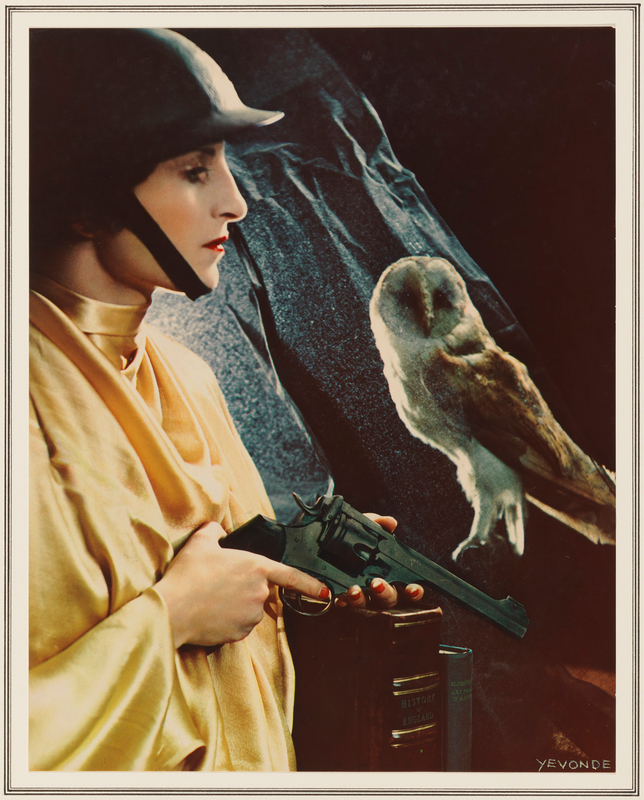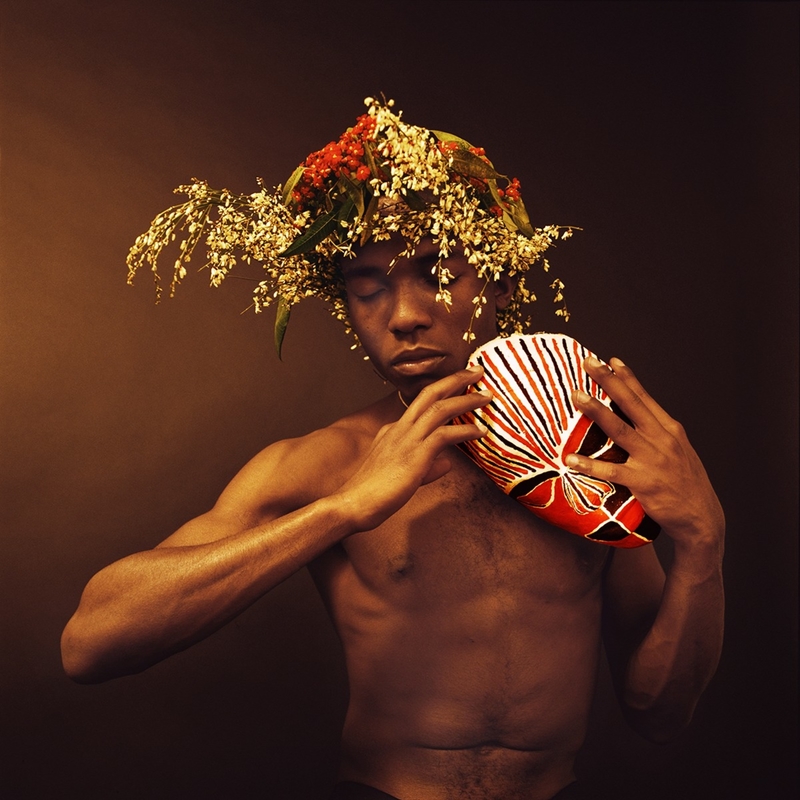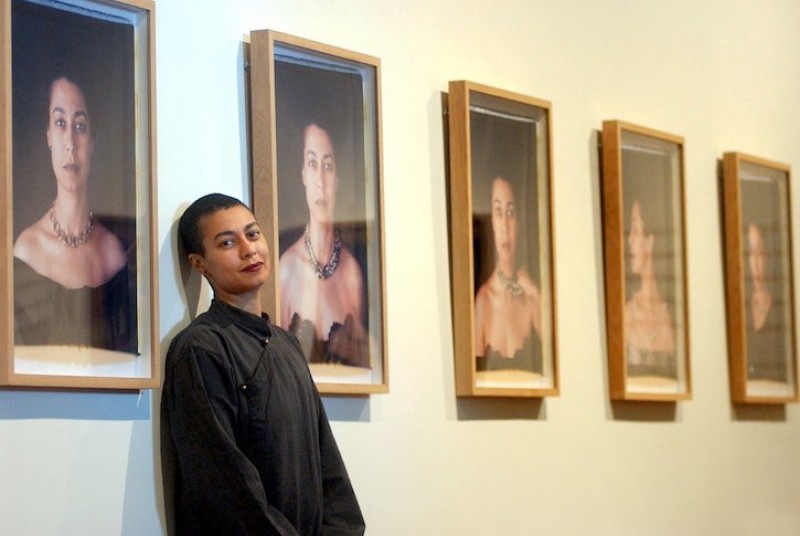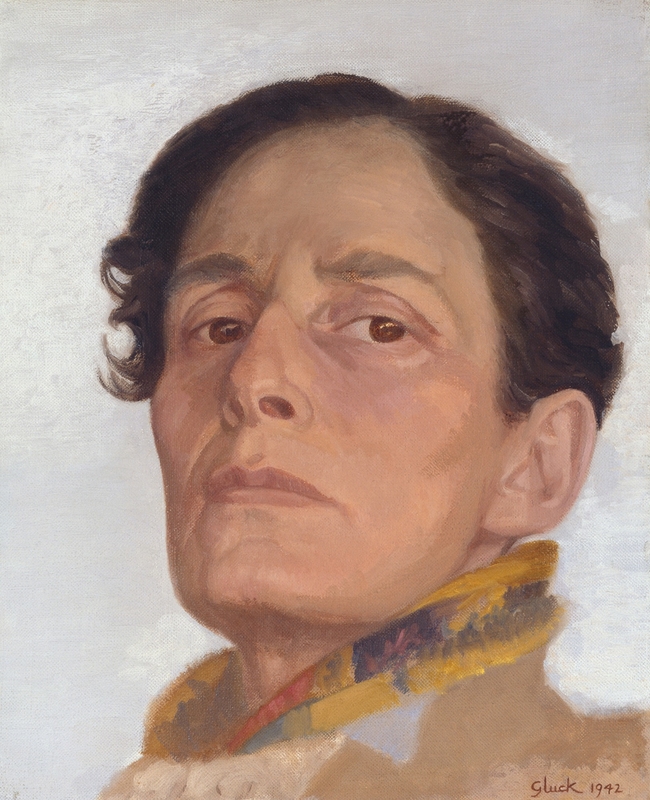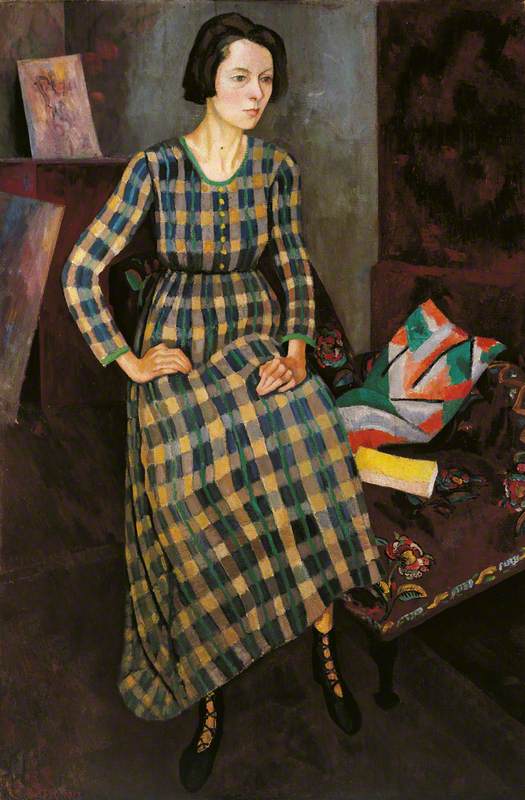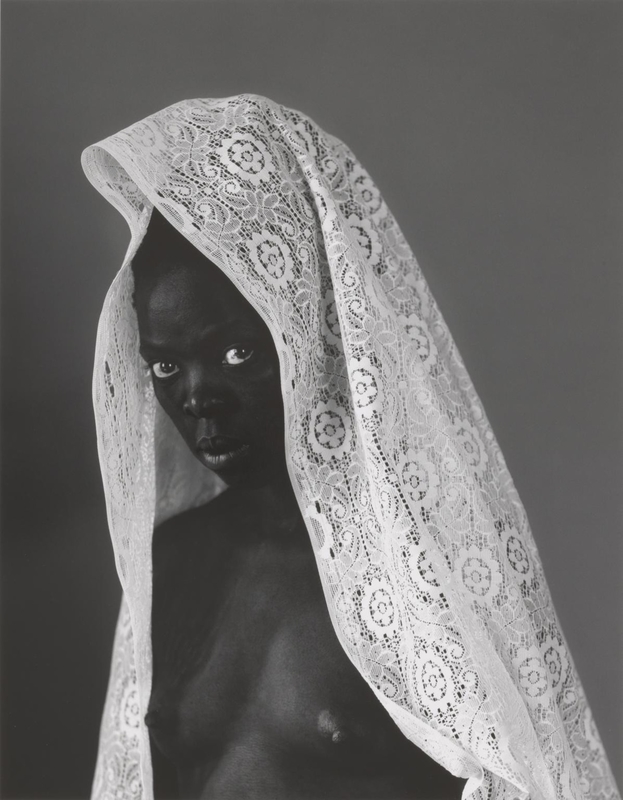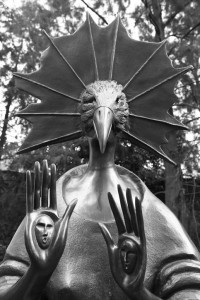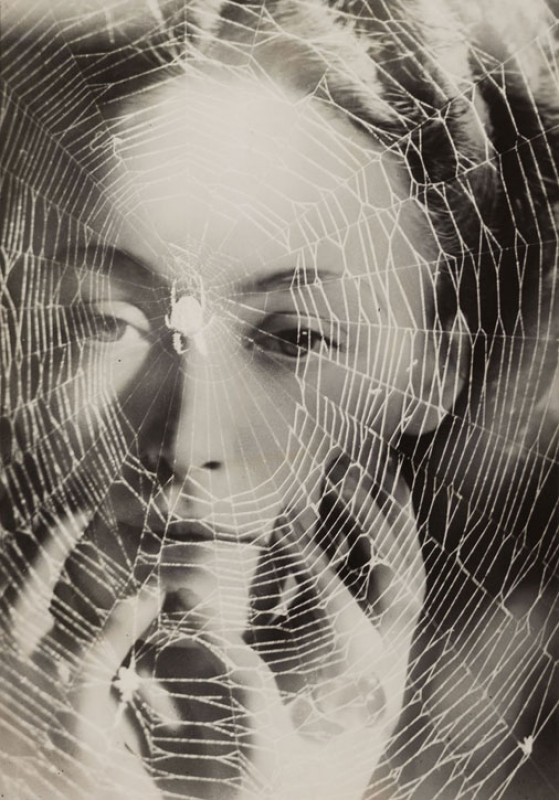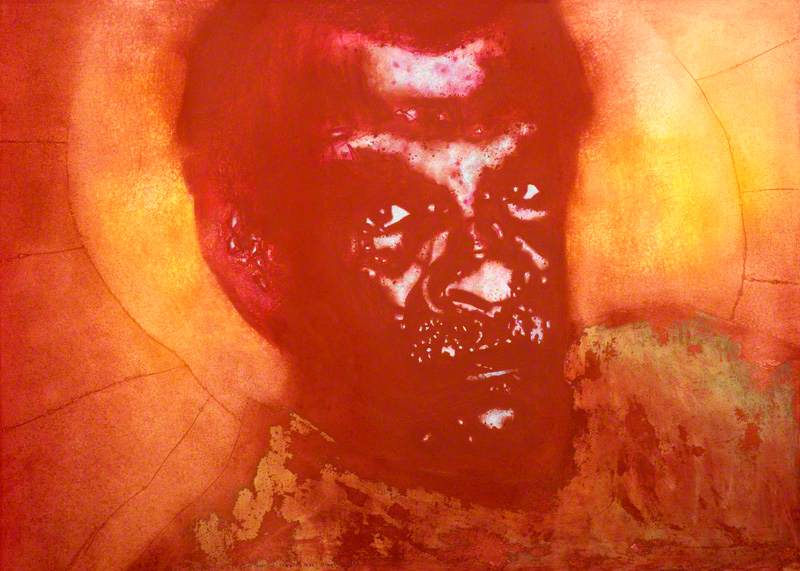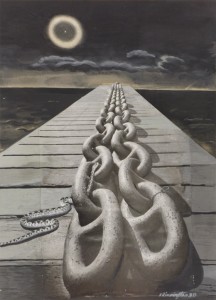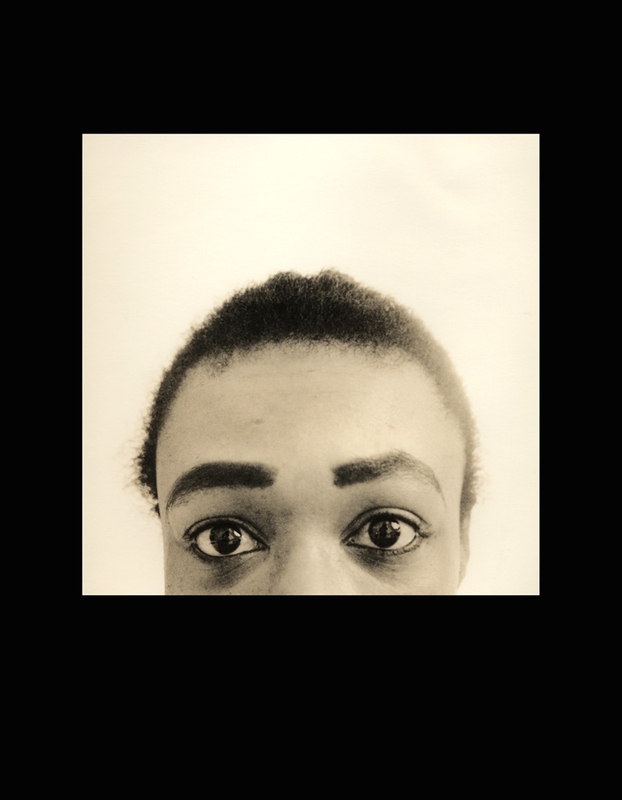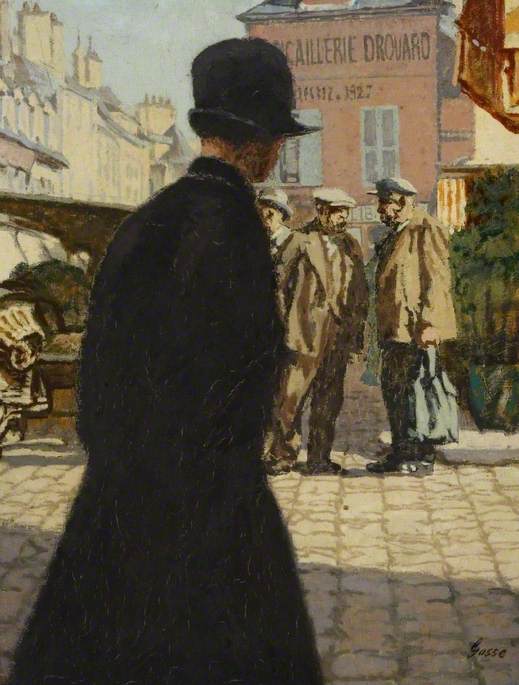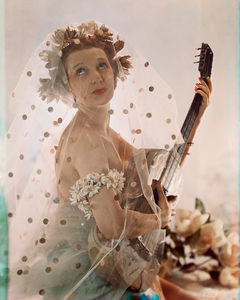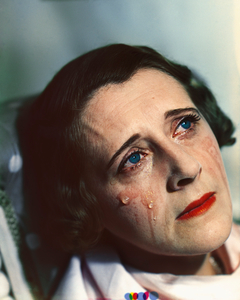'Be original or die would be a good motto for photographers to adopt… let them put life and colour into their work' – Yevonde
Yevonde – a vivacious and innovative photographer – operated across six decades of the twentieth century. A suffragette at the height of the cause and a lifelong supporter of women's rights, Yevonde (1893–1975) opened her first studio in 1914 as a route to independence and declared that 'portrait photography without women would be a sorry business'.
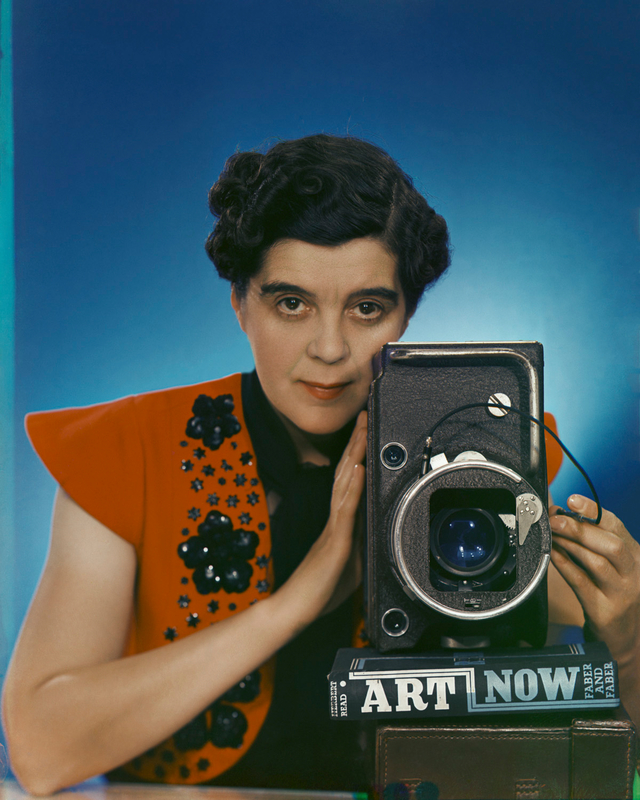
© National Portrait Gallery, London. Image credit: National Portrait Gallery, London
Self-Portrait with Vivex One-Shot Camera 1937
Madame Yevonde (1893–1975)
National Portrait Gallery, LondonYevonde's photographs were disseminated widely – she embraced opportunities within the growing fields of the illustrated press, advertising and fashion. During the interwar years of rapid change and technological advances, Yevonde became a colour pioneer working with the Vivex colour process. Yevonde's commitment to colour photography and her imaginative technique have resulted in a unique vision still fresh today.
In July 1935, Yevonde launched her new Mayfair studio at 28 Berkeley Square with 'An Intimate Exhibition: Goddesses and Others'. Yevonde's most celebrated body of work made a persuasive argument for the brilliance of colour photography.
She had taken inspiration and costumed guests from the 'galaxy of goddesses' who had attended an Olympian-themed charity ball earlier that year. Under Olga Lynn's orchestration, Lady Dorothy Warrender hosted 'almost everyone who has been called "beautiful"', dressed by Oliver Messel, Derek Hill and Eleanor Abbey. Warrender was dressed as Ceres, the Roman goddess of agriculture, crops and fertility by Oliver Messel. The press reported on her 'vast head-dress of waving gold corn ears' and her overflowing cornucopia.
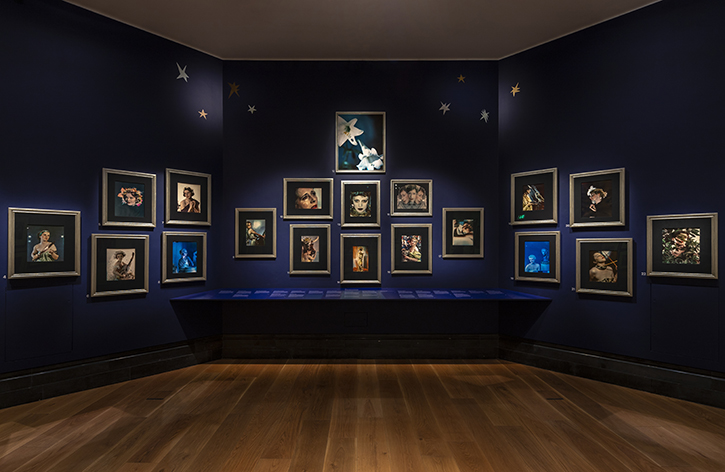
Image credit: National Portrait Gallery, London
'Yevonde: Life and Colour' at the National Portrait Gallery, London, 2023
In 2021 the National Portrait Gallery acquired Yevonde's colour archive with support from the Portrait Fund. This comprises 2,000 tri-separation negatives – 500 of which were conserved, rehoused, digitised and researched supported by the CHANEL culture fund. This treasure trove allows for a re-evaluation of Yevonde at her zenith as a commercial photographer and as an artist. Alternative poses and earlier iterations of her Goddesses enrich our understanding of her working practice.
During the months that followed the Olympian ball, female sitters would find themselves made and dressed up, propped and preened at Yevonde's studio to create 'startling results'. Yevonde took inspiration from art of the past and present, visiting 'picture galleries to alleviate boredom' and reading Art Now (1933) – and used Read's treatise on modern art to allude to her own artistic prowess. Herbert Read was one of the organisers of the 'International Surrealist Exhibition' held in London in 1936 but Surrealist aesthetics had already imbued Yevonde's creativity, evident in her Goddesses, critiqued as a fusion of sexual exploration, fantasy, myth and satire.
Energised sourcing and modifying of props, pushing the limits of studio equipment, and deliberate framing and cropping resulted in Yevonde's modern rendering of powerful female mythologies.
Posing Dorothy Warrender amid translucent orange fabric, Yevonde enhanced the image of bounty. An uncropped version shows the light that throws the shadow and shimmers the gold. Yevonde described the heat of her 3,000-watt lamps and how their intensity required the exaggeration and modification of her sitters' make-up – which in these interwar decades bought colour to the modern woman.

© National Portrait Gallery, London. Image credit: National Portrait Gallery, London
Lady Dorothy (‘Dolly’) Campbell as Niobe 1935
Madame Yevonde (1893–1975)
National Portrait Gallery, LondonDolly Campbell – the wife of her cousin, land speed record holder Malcolm Campbell – suffered for art's sake, posing as Niobe, weeping for her slaughtered children. Yevonde recalled 'I wanted to take a large head expressive of misery and suffering: no background and nothing symbolic'. The tears featured in the composition, reminiscent of Man Ray's Larmes, were achieved with glycerine which mixed with Dolly's mascara and got into her eyes. 'When at last she was able to look up her eyes were bloodshot and her expression so miserable that I rushed the focus and was able to take a face expressive of the utmost sorrow and pain.'
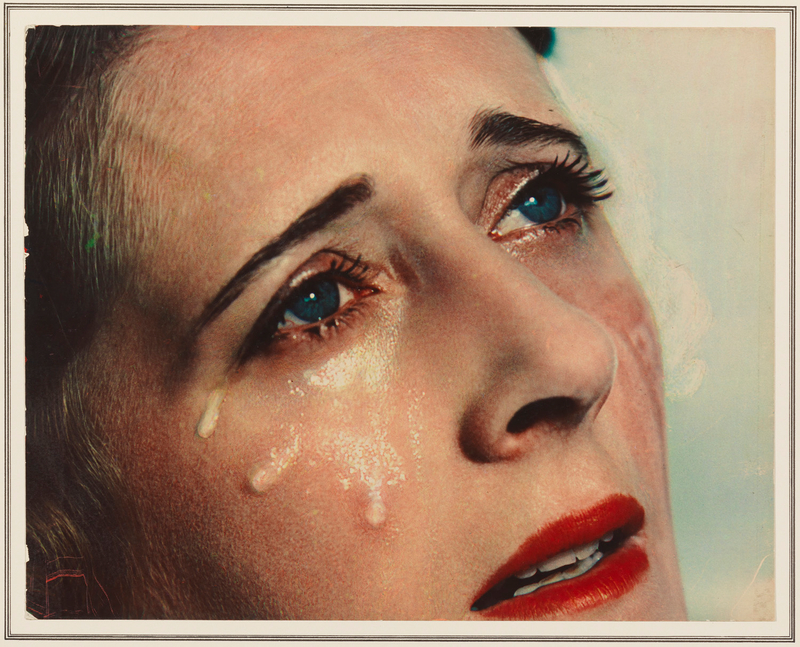
© National Portrait Gallery, London. Image credit: National Portrait Gallery, London
Lady Dorothy (‘Dolly’) Campbell as Niobe 1935
Madame Yevonde (1893–1975)
National Portrait Gallery, LondonThe heightened colour palette of Vivex, so expressive of Yevonde's vision and yet deemed garish by much of the photographic community, is likened to Technicolor – Dolly is framed by a cinema-screen crop in the final print.
Actress Gertrude Lawrence's 'quick humour, insane generosity and loving heart' are visualised through the multiple frames of cheery Thalia, the Muse of comedy and alternatively named the Muse of Lyric Poetry.
Yevonde and Aileen, wife of film producer Michael Balcon, experimented with ancient and modern symbols of war to create a number of different versions of Minerva. In some, Aileen sports a Roman helmet and in another, she has both a shield and a gun. In fact, Aileen's part during the war that followed was as a committed worker for the Red Cross.
Yevonde took colour photography beyond technical brilliance; in the foreword to her unpublished autobiography she reflected; 'if you are arty, if you have an eye for a picture, it may be better not to get too bogged down with the technical details which may spoil your eye.' She deliberately upset the prescribed colour balance of Vivex prints made at Colour Photographs Ltd, Willesden.
She described posing as a water nymph one of the most in-demand women of interwar artists: 'I took two pictures of Lady Bridget Poulett as Arethusa… a head… I did with green cellophane over the lens. It upset the balance of the three negatives pretty considerably and there were loud protests from the printer, but I achieved what I wanted… no red tone and a greenish quality in the flesh.' Montaged and painted fish and bubbles finesse the final aqueous artworks.
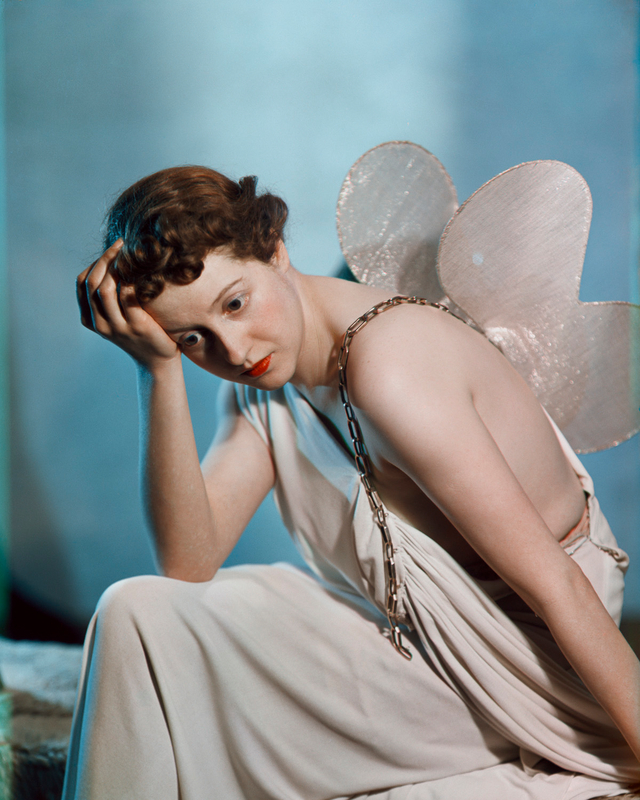
© National Portrait Gallery, London. Image credit: National Portrait Gallery, London
Dorothy Gisborne (Pratt) as Psyche 1935
Madame Yevonde (1893–1975)
National Portrait Gallery, LondonRecently discovered – and included in 'Yevonde: Life and Colour' – Yevonde's portrayal of Psyche, Greek goddess of the soul, expands the Goddess series. Her account of posing her friend Dorothy Gisborne, whose 'mournful brown eyes, exquisite mouth and fair hair seemed… to express the pleasure as well as the pain that Psyche was forced to endure', is given by Yevonde in her autobiography In Camera (1940), however, there are further mythologies not previously included in the series.
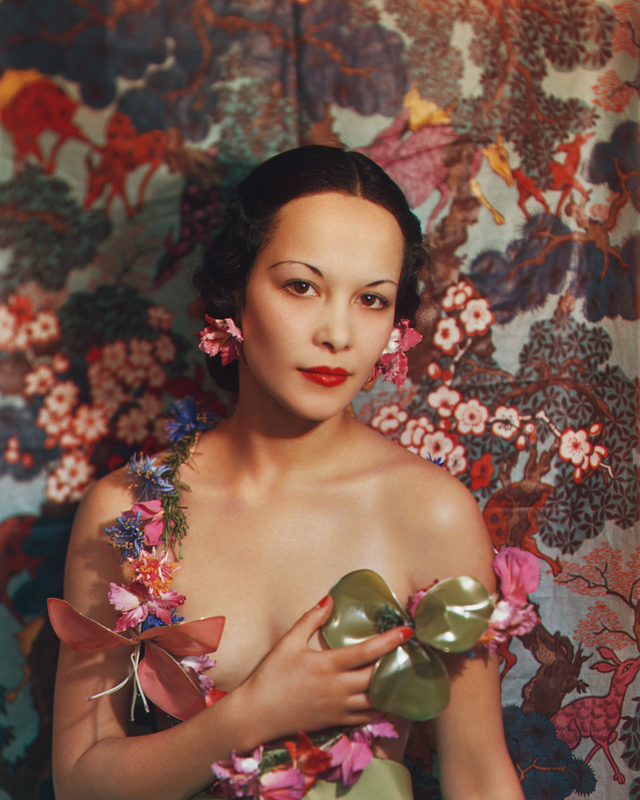
© National Portrait Gallery, London. Image credit: National Portrait Gallery, London
Olga Burnett (née Herard) as Persephone 1935
Madame Yevonde (1893–1975)
National Portrait Gallery, LondonFound in the archive, the stunningly beautiful actress Olga Herrard poses as an alternative Persephone and Maud, Duchess of Wellington encapsulates Hera – the goddess of women, marriage and childbirth – in addition to her three-headed star role as moon goddess of the night and magic, Hecate.
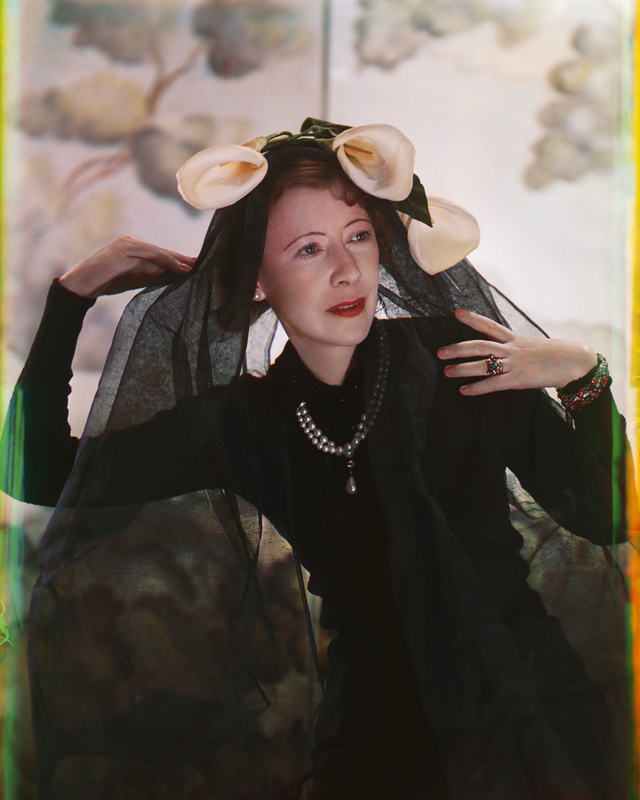
© National Portrait Gallery, London. Image credit: National Portrait Gallery, London
Maud, Duchess of Wellington as Hera 1935
Madame Yevonde (1893–1975)
National Portrait Gallery, LondonThese discoveries are a testament to the Gallery's ongoing work researching and digitising Yevonde's colour archive. It is enthralling that there are further revelations to be transformed into colour after almost a century or, for some, for the very first time.
Clare Freestone, Curator, Photographs at the National Portrait Gallery
'Yevonde: Life and Colour' is showing at the National Portrait Gallery in London until 15th October and at the Laing Art Gallery in Newcastle from 4th November 2023 to 14th April 2024

